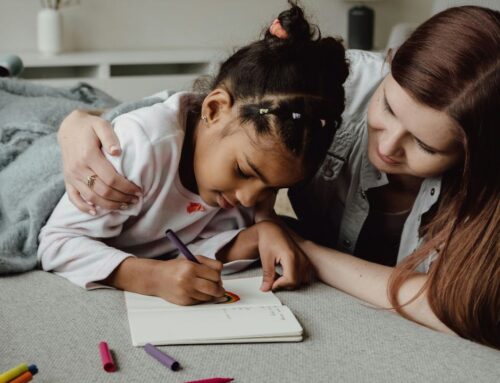One of the greatest gifts of home learning is the freedom it gives families to shape each day around their own rhythm. Without the demands of a rigid school schedule or one-size-fits-all curriculum, learning can unfold in ways that feel natural, meaningful and joyful.
But with all that flexibility comes a question many home learning families face: How do you balance structure with freedom?
Some learners thrive with more consistency and clear expectations. Others flourish when given room to explore, create and follow their curiosity. The beauty of personalized learning is that it can honour both—and finding the right balance for your learner is key.
Why does balancing the two matter?

Children need a certain amount of freedom to explore their world around them and make connections on their own terms. Too much structure can lead to boredom—or even anxiety—if they don’t have enough room to be creative or follow their interests.
But structure is important too. It gives learners a sense of stability, helps them stay focused, and ensures they don’t miss essential learning opportunities.
A healthy blend of both helps your child feel safe, supported and inspired.
Ways to add gentle structure to home learning
Try daily routines instead of rigid schedules
You don’t need to plan every hour of every day. Instead, create a rhythm. Maybe your child likes to start the day with reading or breakfast outside. Or maybe they like it when afternoons are reserved for online activities or hands-on projects.
The key is consistency, not rigidity. Try starting and ending the day in a similar way each time, and observe how your child responds. You know your child best, and together, you can decide on a routine that feels natural.
Set small, achievable goals for each day or week
Daily or weekly goals help give purpose and direction to your child’s time. These can be simple—like finishing a chapter in a book or planning a meal—or more involved, like completing a short story or exploring a new topic.
Involve your child in setting these goals. When they help plan their week, they’re more likely to stay motivated—and you may discover subjects they’re naturally drawn to.
Ways to encourage freedom and flexibility

The entire basis of the SelfDesign learning philosophy is to let your child follow their own curiosities, interests and passions. Let them be the conductors of their learning journey, with the freedom to choose some activities and outings based on what inspires them.
Use flexibility constructively. If your child gets restless during sit-down work, take a movement break—go for a walk, do some yoga, or shoot a few hoops. If they’re feeling tired or emotional, try watching an educational documentary together. You’re not “losing learning time”—you’re simply meeting your child where they are.
Some of the best learning happens in real life. Turn “everyday life” into learning opportunities by having your child help cook a meal—measuring ingredients involves math, understanding recipes involves reading and science. Or take a nature walk and have your learner journal about or draw pictures of what they saw. Suddenly, you’re combining biology, observation, and writing—all without a worksheet in sight.
Let the journey evolve
Finding the right balance between structure and freedom is a process. Some days will go smoothly; others might feel a bit chaotic—and that’s okay.
With time, you’ll develop a sense of what your child needs and how to best support them. Home learning is a creative path, and when it’s personalized, everyone involved benefits.







